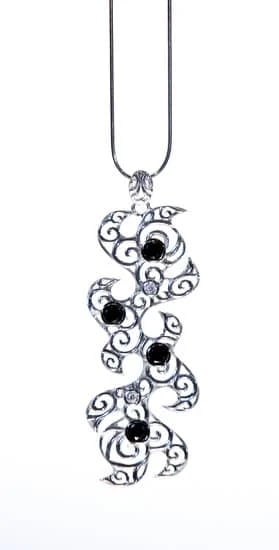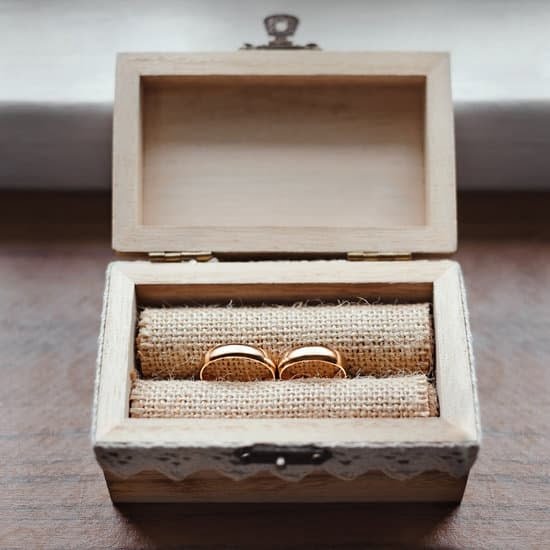The history of De Beers jewelry dates back to the late 19th century and is closely intertwined with the diamond industry. The company has played a significant role in shaping the global diamond market and its iconic designs have left a lasting impact on popular culture. This article delves into the founding of De Beers Jewelry Company, its influence on the diamond industry, marketing strategies, iconic designs, ethical and environmental concerns, as well as its global impact.
The founding of De Beers Jewelry Company marked a pivotal moment in the history of the diamond trade. As South Africa experienced a diamond rush in the late 1800s, the company emerged as a major player in the industry by securing control over diamond mines and establishing a monopoly. This laid the foundation for its prominent role in shaping the global diamond market.
In addition to its stronghold in the diamond industry, De Beers Jewelry is renowned for its innovative marketing strategies that contributed to diamonds becoming synonymous with love and commitment. The company’s iconic “A Diamond Is Forever” campaign is one of many initiatives that have left an indelible mark on how diamonds are perceived and marketed worldwide.
The Founding of De Beers Jewelry Company
The history of De Beers jewelry dates back to the founding of the company in 1888 by British businessman Cecil Rhodes. Rhodes, who had made his fortune in the diamond industry, recognized the potential for a monopoly on the world’s diamond supply and set out to establish De Beers Consolidated Mines Limited. This marked the beginning of what would become one of the most influential and powerful companies in the history of de beers jewelry.
The company quickly gained control over diamond production in South Africa, where the discovery of diamonds had led to a massive influx of prospectors and miners in what became known as the Diamond Rush. By consolidating various mines under its control, De Beers effectively monopolized the diamond industry, allowing them to regulate the supply and price of diamonds on a global scale.
This period also marked significant advancements in diamond mining technology and techniques, with De Beers at the forefront of these developments. Their influence was not only felt in South Africa but also across the globe as they expanded their operations and solidified their position as a dominant force in the diamond market.
The founding of De Beers Jewelry Company set off a chain of events that would shape not only the company’s future but also significantly impact the entire history of de beers jewelry.
| Year | Event |
|---|---|
| 1888 | De Beers Jewelry Company founded by Cecil Rhodes |
| Mid-1800s | Diamond Rush in South Africa begins |
The Diamond Rush in South Africa
As diamond mining boomed in South Africa, so did the need for efficient management and control of the industry. This demand led to the founding of De Beers Jewelry Company by Cecil Rhodes in 1888.
The company quickly became a driving force behind the consolidation and organization of diamond mining operations, eventually gaining control over a significant portion of the world’s diamond supply. De Beers’ strategic approach to managing and marketing diamonds during this period paved the way for its ascension to global prominence.
The impact of the diamond rush on South Africa cannot be overstated. It transformed the country into an essential player in the global diamond trade and significantly influenced its economy and infrastructure.
Furthermore, it set the stage for De Beers Jewelry to emerge as an industry leader, dictating trends, prices, and consumer perceptions surrounding diamonds for decades to come. The history of De Beers Jewelry is deeply intertwined with this defining moment, shaping not only its own trajectory but also that of the entire diamond industry on a global scale.
De Beers Jewelry and the Diamond Industry
De Beers Jewelry has played a significant role in shaping the diamond industry, and its influence can be seen through various facets of the market. From controlling the supply of diamonds to creating demand through smart marketing strategies, De Beers has been a major player in the diamond industry for decades.
Controlling the Diamond Supply
One of the key aspects of De Beers’ impact on the diamond industry is its control over the supply of diamonds. In the late 19th century, De Beers Consolidated Mines Ltd. was founded by Cecil Rhodes with the goal of monopolizing diamond production in South Africa. By effectively controlling the world’s rough diamond output, De Beers was able to manipulate prices and create an artificial scarcity that increased the value of diamonds.
Marketing Strategies
De Beers is also credited with pioneering modern marketing strategies that have shaped consumer perceptions of diamonds. The iconic “A Diamond is Forever” campaign launched in 1947 was a groundbreaking move that ingrained the idea of diamonds as symbols of eternal love and commitment. This campaign not only boosted sales for De Beers but also solidified diamonds as must-have items for engagements and special occasions.
Impact on Other Diamond Producers
The dominance of De Beers in the diamond industry has had a profound impact on other diamond producers around the world. With its control over pricing and distribution, De Beers set standards that influenced how other companies maneuvered within the market. The company’s practices also contributed to shaping global trade regulations and agreements related to diamonds, further solidifying its influence on the industry as a whole.
De Beers Jewelry and the Marketing of Diamonds
De Beers Jewelry has played a significant role in shaping the marketing of diamonds over the years. The company has been instrumental in creating and perpetuating the idea that diamonds are a symbol of love, commitment, and luxury. This section will explore the history of De Beers Jewelry and its influence on the marketing strategies of diamonds.
- De Beers’ marketing campaigns: De Beers Jewelry is famously known for its marketing campaigns that have helped solidify the association between diamonds and romance. Their “A Diamond is Forever” campaign, launched in 1947, has had a lasting impact on how diamonds are perceived and marketed. The campaign not only emphasized the eternity of diamonds but also influenced consumer behavior by linking diamonds with emotional values.
- Diamond engagement ring tradition: De Beers Jewelry also played a pivotal role in popularizing the tradition of giving diamond engagement rings. In the 1930s, they introduced the concept of using diamond rings as a symbol of commitment between couples, thus fueling demand for diamonds. This marketing strategy not only boosted sales for De Beers but also established a cultural norm that continues to this day.
- Controversial marketing practices: Despite its successful marketing strategies, De Beers has faced criticism for its aggressive tactics in controlling diamond prices and monopolizing the market. The company’s dominance in the diamond industry has raised ethical concerns about fair trade practices and exploitation within the supply chain. Additionally, De Beers’ historical influence on diamond mining and pricing has prompted scrutiny regarding their environmental impact.
As we delve into the history of De Beers Jewelry and its impact on diamond marketing, it becomes evident that their innovative strategies have shaped consumer perceptions and purchasing behaviors worldwide. However, these achievements are also accompanied by controversies surrounding ethical considerations and environmental sustainability within the industry.
De Beers Jewelry and Their Iconic Designs
De Beers Jewelry is renowned for its iconic designs that have captured the hearts of jewelry lovers around the world. The company’s history of producing stunning and timeless pieces has solidified its place in the luxury jewelry market. From signature diamond cuts to innovative settings, De Beers Jewelry has continually set the standard for excellence in design.
Some of the most iconic designs from De Beers Jewelry include:
- The classic solitaire engagement ring, featuring a single, dazzling diamond set on a simple band
- The “Aura” collection, which showcases diamonds surrounded by a halo of pave diamonds, creating a luminous and ethereal effect
- The “Talisman” collection, inspired by ancient traditions and myths, featuring unique rough diamonds set in intricate designs
These iconic designs have not only become synonymous with luxury and sophistication but have also played a significant role in shaping the trends within the jewelry industry. The craftsmanship and attention to detail that are evident in each De Beers Jewelry piece have made them highly sought after by collectors and connoisseurs alike.
Moreover, De Beers’ commitment to innovation and creativity has resulted in groundbreaking designs that push the boundaries of traditional jewelry-making techniques. This dedication to excellence has cemented their position as an industry leader and has ensured their enduring legacy in the world of high-end jewelry. Through their iconic designs, De Beers Jewelry continues to inspire and captivate those with a passion for exquisite craftsmanship and timeless beauty.
The Influence of De Beers Jewelry on Popular Culture
De Beers Jewelry has had a significant impact on popular culture throughout its history. The company’s marketing strategies, iconic designs, and association with diamonds have all contributed to their influence on popular culture. Since its founding, De Beers Jewelry has been synonymous with luxury and elegance, making it a widely recognized brand around the world.
One of the most notable contributions of De Beers Jewelry to popular culture is its role in shaping the perception of diamonds as symbols of love and commitment. The company’s “A Diamond Is Forever” campaign, launched in 1947, forever changed the way people view diamonds. This slogan became ingrained in popular culture and solidified the association between diamonds and everlasting love.
Furthermore, De Beers Jewelry’s iconic designs have also made a lasting impression on popular culture. The company’s classic pieces, such as the timeless solitaire diamond engagement ring, have become cultural symbols of romance and status. These designs are often replicated and referenced in popular media, further cementing their influence on the public perception of jewelry and luxury.
Additionally, De Beers Jewelry has been featured prominently in popular culture through films, television shows, and celebrity endorsements. The allure of De Beers diamonds has been consistently portrayed as a symbol of wealth, sophistication, and romance in various forms of media over the years.
Finally, while De Beers Jewelry has undoubtedly left an indelible mark on popular culture through its promotion of diamonds as symbols of love and commitment, it is important to acknowledge the ethical and environmental concerns surrounding diamond mining. This aspect has also impacted how the brand is perceived within popular culture.
| Influence | Popular Culture |
|---|---|
| Marketing strategies | Symbols of love and commitment |
| Iconic designs | Cultural symbols of romance and status |
| Media portrayal | Symbols of wealth and sophistication |
The Ethical and Environmental Concerns Surrounding De Beers Jewelry
De Beers Jewelry, known for its stunning diamond designs, has also faced its fair share of ethical and environmental concerns throughout its history. From conflict diamonds to environmental impact, the company has had to address these pressing issues in order to maintain its reputation in the industry.
Conflict Diamonds
One of the major ethical concerns surrounding De Beers Jewelry is the issue of conflict diamonds, also known as blood diamonds. These are diamonds that are mined in war zones and sold to finance insurgents and warlords. De Beers has been implicated in the trade of conflict diamonds in the past, leading to widespread criticism and calls for more transparency within the diamond industry.
Environmental Impact
The mining and production of diamonds have a significant environmental impact. De Beers’ operations have been scrutinized for their effects on local ecosystems, including deforestation, soil erosion, and the disruption of wildlife habitats. Additionally, there are concerns about water usage and pollution from mining activities. In recent years, De Beers has made efforts to mitigate their environmental impact through sustainable mining practices and land rehabilitation projects.
Ethical Sourcing and Sustainability
In response to these concerns, De Beers has made strides towards ethical sourcing and sustainability. The company has implemented measures to ensure that their diamonds are sourced responsibly and do not contribute to conflicts or human rights abuses.
Furthermore, De Beers has committed to reducing their carbon footprint and implementing eco-friendly practices throughout their supply chain. Despite these efforts, there is still ongoing debate about the true sustainability of diamond mining and whether it can be truly ethical in nature.
The Global Impact of De Beers Jewelry
De Beers Jewelry has left an indelible mark on the global jewelry industry, setting trends and shaping popular culture for over a century. From its founding as a small diamond company in South Africa to becoming one of the most recognized names in luxury jewelry, the history of De Beers Jewelry is a testament to its enduring influence.
The history of De Beers Jewelry is closely tied to the history of the diamond industry itself. The company’s strategic control of diamond mining and distribution allowed it to shape the market and create demand for diamonds worldwide. This influence has had a lasting impact on how diamonds are valued and marketed, making De Beers Jewelry a household name synonymous with luxury and quality.
Additionally, the iconic designs created by De Beers Jewelry have set the standard for elegance and sophistication in the industry. From timeless engagement rings to stunning high jewelry pieces, the brand continues to inspire admiration and desire among consumers around the world.
Despite its global success, De Beers Jewelry has also faced ethical and environmental concerns related to its mining practices. As awareness about sustainable sourcing and ethical labor practices grows, De Beers Jewelry has taken steps to address these issues through responsible mining initiatives and ethical sourcing programs. This ongoing commitment to sustainability underscores the significance of De Beers Jewelry not only as a pioneering force in luxury jewelry but also as a responsible global citizen.
Frequently Asked Questions
What Is the History of De Beers Jewellery?
De Beers Jewellery has a rich history dating back to 1888 when it was founded by Cecil Rhodes. The company played a significant role in the global diamond industry and is renowned for its diamond mining and trade operations.
What Is the Controversy With De Beers?
De Beers has faced controversy related to its monopoly over the diamond market, as well as allegations of price fixing and anti-competitive practices. Additionally, there have been concerns about the exploitation of workers in their mines.
What Is the Significance of the Diamonds in De Beers?
Diamonds hold great significance for De Beers as they are a symbol of luxury, love, and commitment. The company has heavily marketed the idea that diamonds are essential for engagements and special occasions, solidifying their cultural significance around the world.

Welcome to my jewelry blog! My name is Sarah and I am the owner of this blog.
I love making jewelry and sharing my creations with others.
So whether you’re someone who loves wearing jewelry yourself or simply enjoys learning about it, be sure to check out my blog for insightful posts on everything related to this exciting topic!





